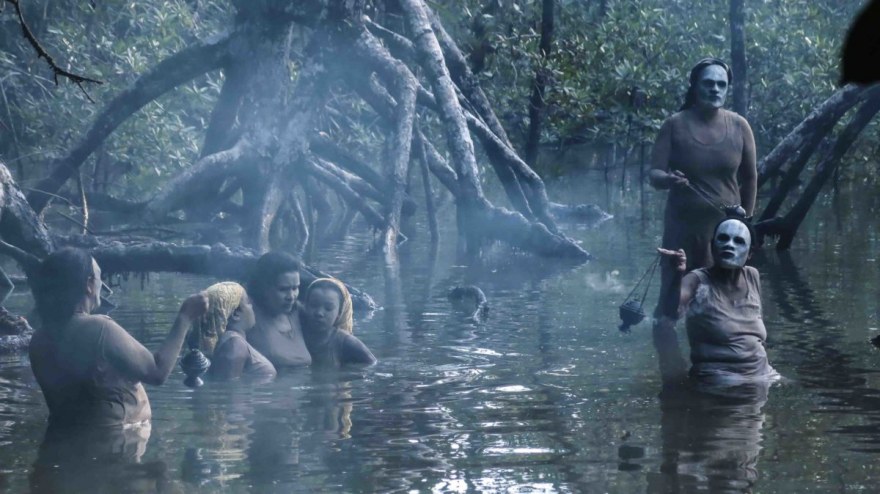Tea time with María de los Esteros
An interview with Eugenio Borrero, director of María de los Esteros (María from the Mangroves)
How did you work on the lights and colors in María de los Esteros and why?
For this short film we shot almost exclusively in natural light because we wanted the characters to be in harmony, both physically and emotionally, with the natural landscape of the Columbian Pacific coast. We wanted the “Piangüera” woman, in other words María, the woman who digs up shells, to blend in with the mud of the mangroves. As if she herself were part of the roots. However, we didn’t want to make a realistic portrait of the mangroves. That’s why we choose the color sepia which enabled us to accentuate the lushness and the contrasts of the area and to construct a symbolic space, timeless and dismal.
Where did you shoot the film? Does Bajamar really exist?
Since 2007 the government has put in place the macro-project Ciudadela de San Antonio in the port of Buenaventura (Colombia.) This project aims to resettle families living in pile-dwellings along the low-water mark further inland. At the beginning, the government officials argued that the main reason for this move was to protect the population from the risk of a tsunami. But in reality, many obscure interests are hidden behind this project. In fact, according to the development plans of the city, the inhabitants of this low-water zone are an obstacle for expanding the port and building megaprojects. This has nothing to do with “helping” the population.
Can we consider water as a character in the film?
As the mangroves thrive between the sea and the land, María de los Esteros lives between remembering and forgetting. Maria seems to be connected to the ebb and flow of the tide as if the swell of the waves was reminding her of the past. In this sense, we could say that the water is a character as well as the mangroves, the sea, the coast. In María de los Esteros the main character is the wide-open space itself.
How much were you interested in the loss of culture and the disappearance of whole communities facing rapid globalization?
Today, the guardians of ancestral remembrance on this land are treated the same way we treat containers: we pile them up, move them elsewhere or throw them away. It’s a process of annihilation employed in the cruelest fashion which, to leave no trace, uses methods such as disappearance and dismemberment. What in principle is presented as a relocation process becomes a complex phenomenon of territorial dispossession. All this means that not only is the population expulsed from the land they have lived on for 70 years, but the population is dispossessed of the symbolic earnings generated by their daily interaction with the coast.
Why did you not want to show any male figures in the film?
The absence of male figures in the film is rather “biological” because the tradition of digging up piangüas in the mangroves is woman’s work and the technique is handed down from generation to generation.
Would you say that the short film format has given you any particular freedom?
María de los Esteros doesn’t employ logical cause and effect but rather the discontinuous game found in poetry. The reason is simple: it’s a woman digging for piangüas in the Raizales community who, while working, recollects. The outcome of her reminiscence is the narrative used to create a story where chronological time is replaced by the time of Maria’s memories and perceptions.
María de los Esteros is being shown in the Labo Competition L2









